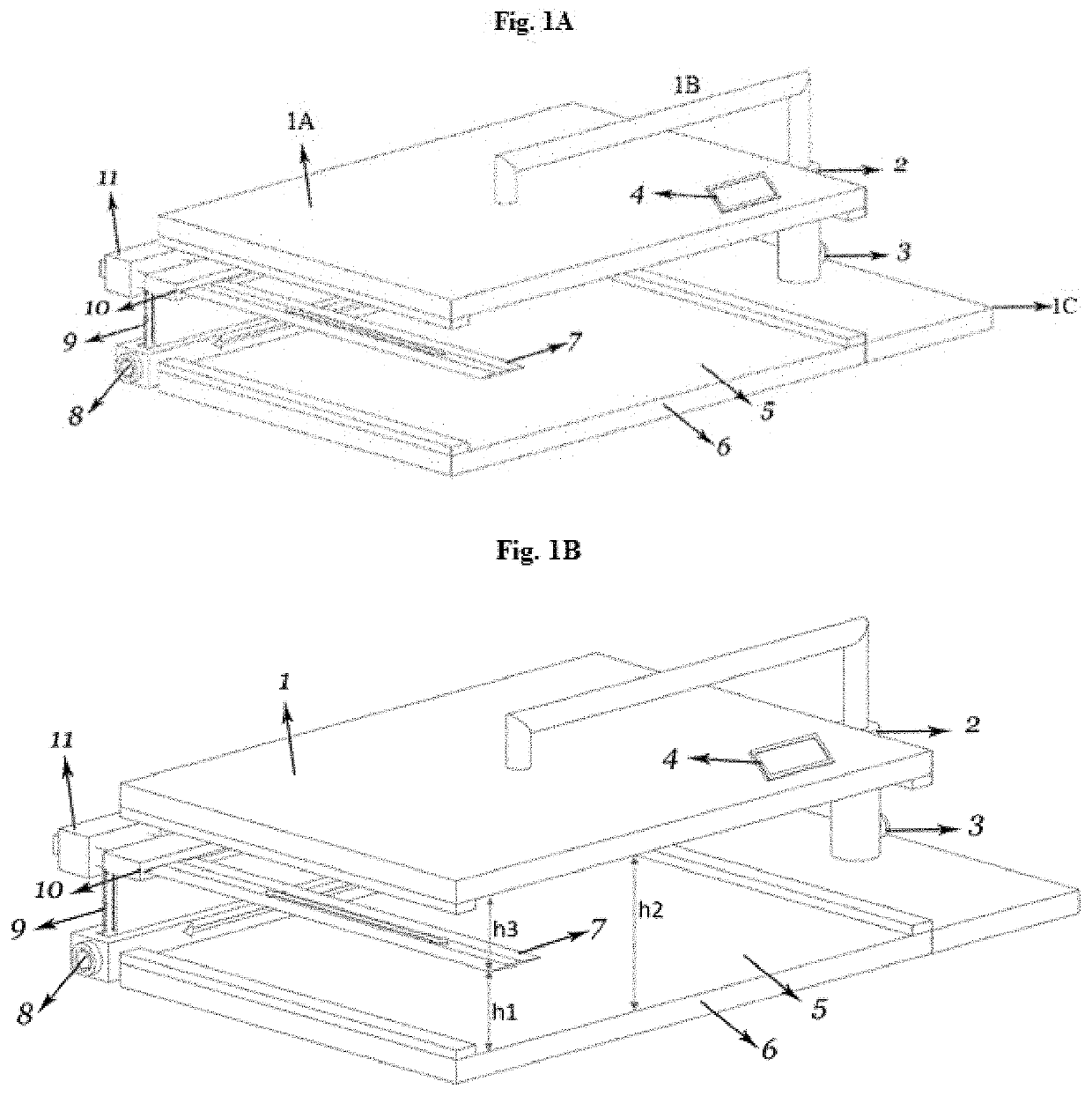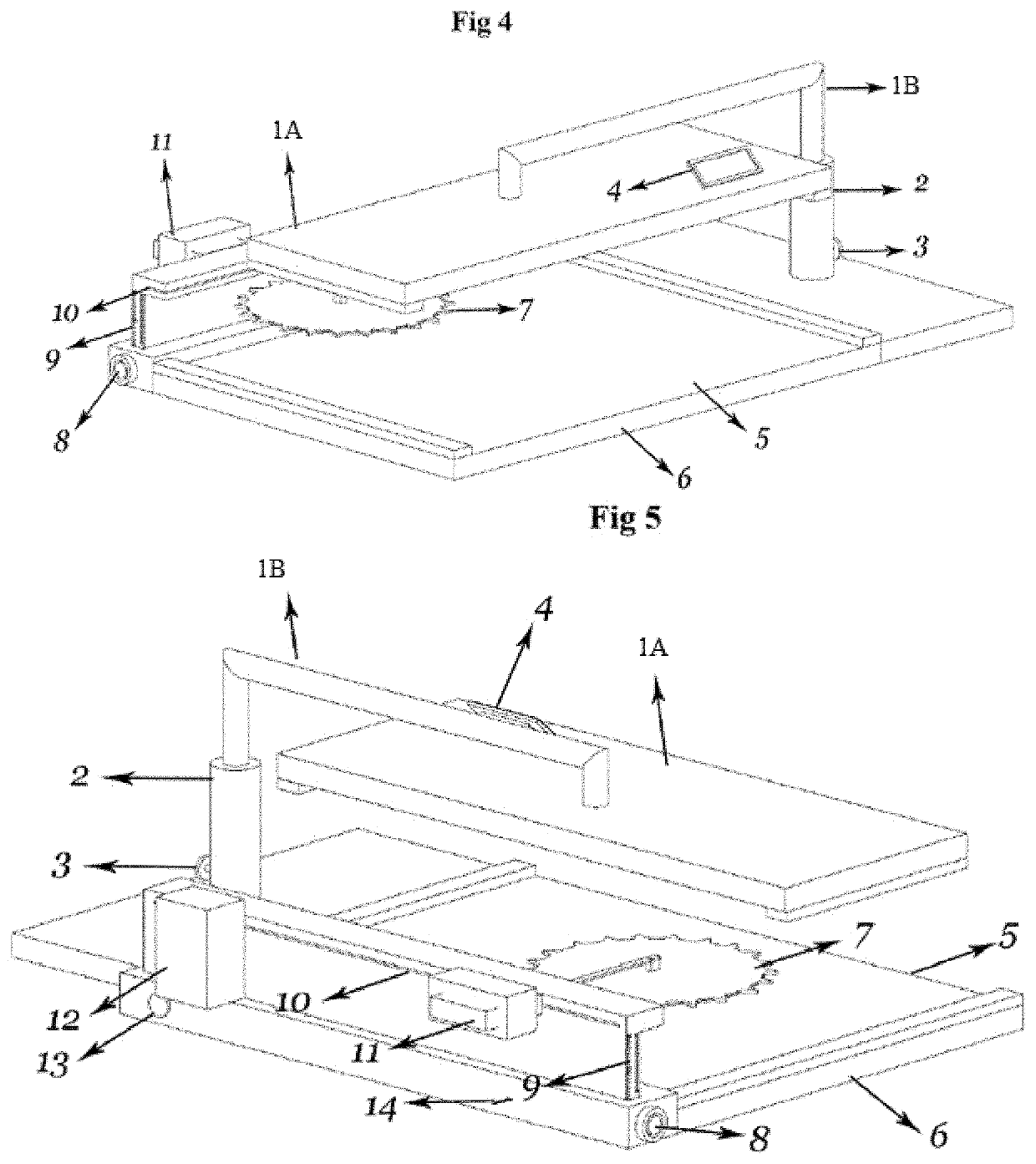Tissue graft splitter
- Summary
- Abstract
- Description
- Claims
- Application Information
AI Technical Summary
Benefits of technology
Problems solved by technology
Method used
Image
Examples
Embodiment Construction
[0027]A tissue splitting device is disclosed which may be operated manually or automatically and which securely holds harvested tissue, especially soft tissue such as gingival tissue, during cutting so as to reproducibly provide layers of tissue having substantially uniform thicknesses. This tissue slices or layers produced by this device are viable, of substantially uniform thickness, and can be tailored using the device for particular surgical graft sites. Preferably the device and method work without requirement for embedment of the tissue during cutting and preferably provide adjustable sample thickness.
[0028]Embodiments of this technology include, but are not limited to the following.
[0029]One embodiment of the invention is a tissue splitting device comprising a clamp comprising a horizontal and parallel upper plate and lower mounting plate, and a horizontal space between the upper plate and lower mounting plate that can accommodate a harvested tissue, wherein a blade is horizo...
PUM
 Login to View More
Login to View More Abstract
Description
Claims
Application Information
 Login to View More
Login to View More - R&D
- Intellectual Property
- Life Sciences
- Materials
- Tech Scout
- Unparalleled Data Quality
- Higher Quality Content
- 60% Fewer Hallucinations
Browse by: Latest US Patents, China's latest patents, Technical Efficacy Thesaurus, Application Domain, Technology Topic, Popular Technical Reports.
© 2025 PatSnap. All rights reserved.Legal|Privacy policy|Modern Slavery Act Transparency Statement|Sitemap|About US| Contact US: help@patsnap.com



